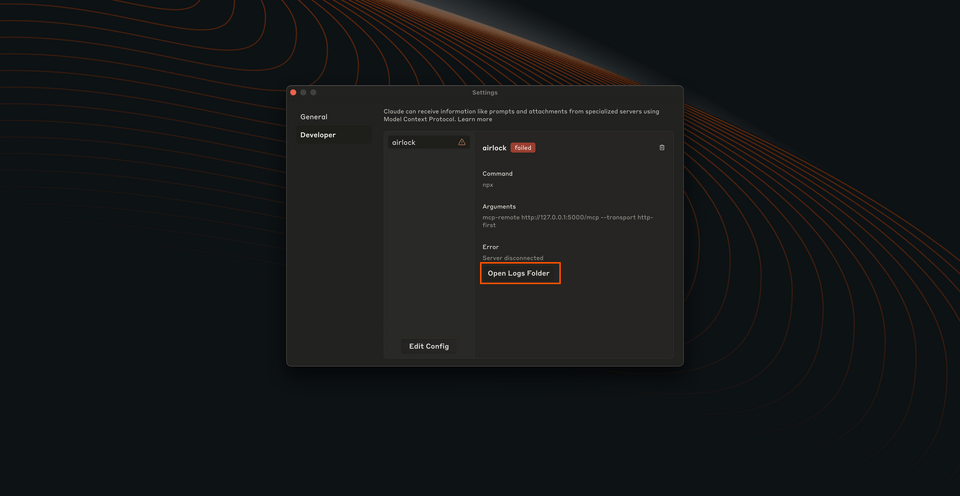Overview
Time to loop in Claude. We're going to equip our assistant with its first helpful tool!
In this lesson, we will:
- Connect Claude to our MCP server
- Inspect how tools are represented in Claude
- Ask a question that prompts Claude to invoke our tool
Enabling MCP in Claude
Let's return to our Claude application. In the Application tool bar, open up Settings.
On MacOS, this is accessible through the main Claude menu dropdown, shown below. (On Windows, click on the app's menu button in the top-left corner, then go to File, Settings.)

Next, we'll select the Developer option from the left-hand menu. In this window we'll see a short overview about Claude's compatibility with servers that use MCP.
To equip Claude with a connection to our MCP server, we'll click the button that says Edit Config.
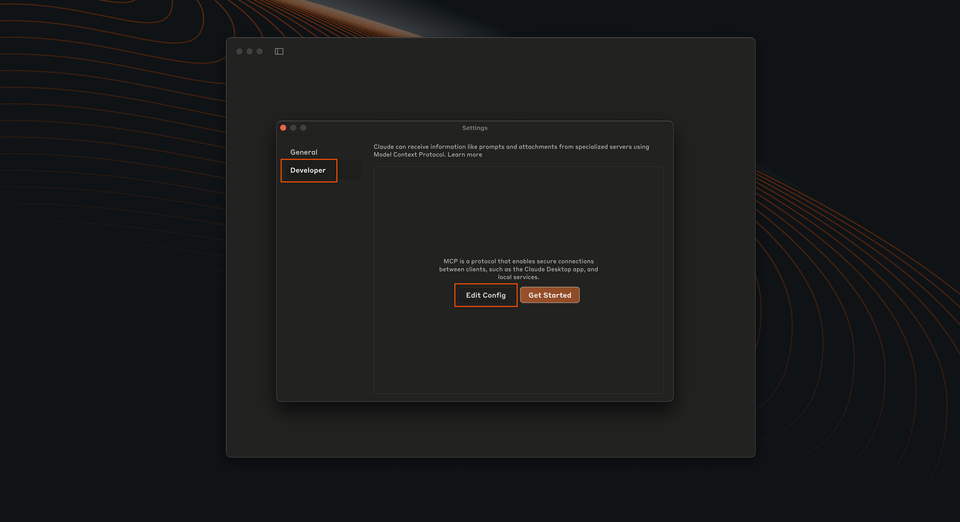
This will open a new file system window, opened to a particular file in the Claude application folder called claude_desktop_config.json. Right-click on this file, and let's open it up in our code editor.
What we'll see is a pretty simple setup to start! If you're running a fresh installation of Claude, you'll probably see an empty mcpServers config:
{"mcpServers": {}}
Let's make some space inside that mcpServers object. First off, we'll specify the name we want to use to identify our MCP server: airlock. For its value, we'll open up a new object.
{"mcpServers": {"airlock": {}}}
There are two properties we need to define in this next object: "command" and "args".
The "command" property should be set to what starts the MCP server. We'll connect using npx as the command, with a variety of arguments to configure exactly where the MCP server is running.
{"mcpServers": {"airlock": {"command": "npx"}}}
For "args", we'll define an array that contains several strings, one for each parameter and value we want to be included in the command. We need to pass the mcp-remote argument along with the URL where the MCP server is running. Here's what that looks like:
"args": ["mcp-remote","http://127.0.0.1:8000/mcp"]
With this configuration, we're asking Claude to execute a specific NPM package, mcp-remote, to connect to an MCP server that's already running. We've provided the URL where our own MCP server is running.
Here's what your full claude_desktop_config.json should look like.
{"mcpServers": {"airlock": {"command": "npx","args": ["mcp-remote", "http://127.0.0.1:8000/mcp"]}}}
Save the file, and return to Claude. We won't see anything right away, so let's restart the application.
Time to chat!
When we reopen Claude, we might not see anything different right away. But the terminal where our server's running should have some new output:
And looking closely in Claude, we'll find a new button in the interface.
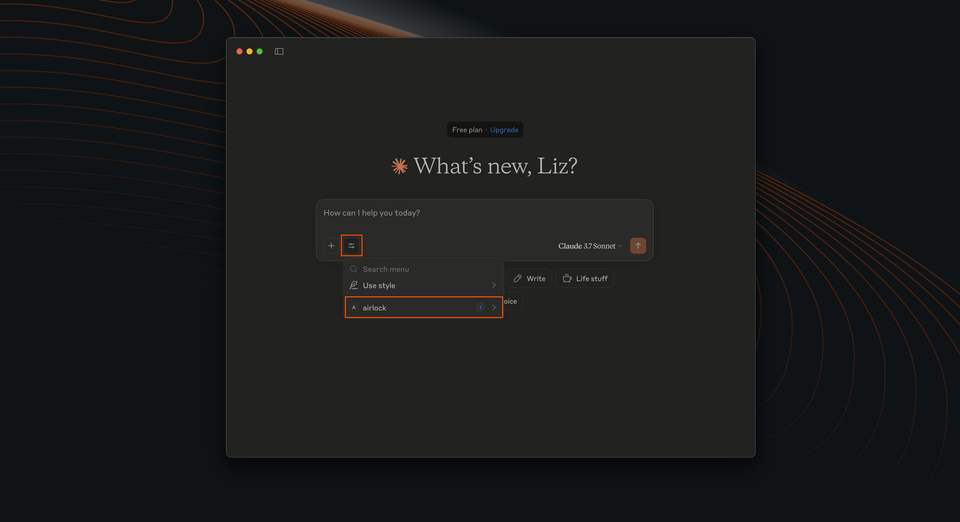
At the bottom of the menu we should see an item called airlock, and when we click into this, we'll see a specific tool called GetFeaturedListings. This should be enabled.
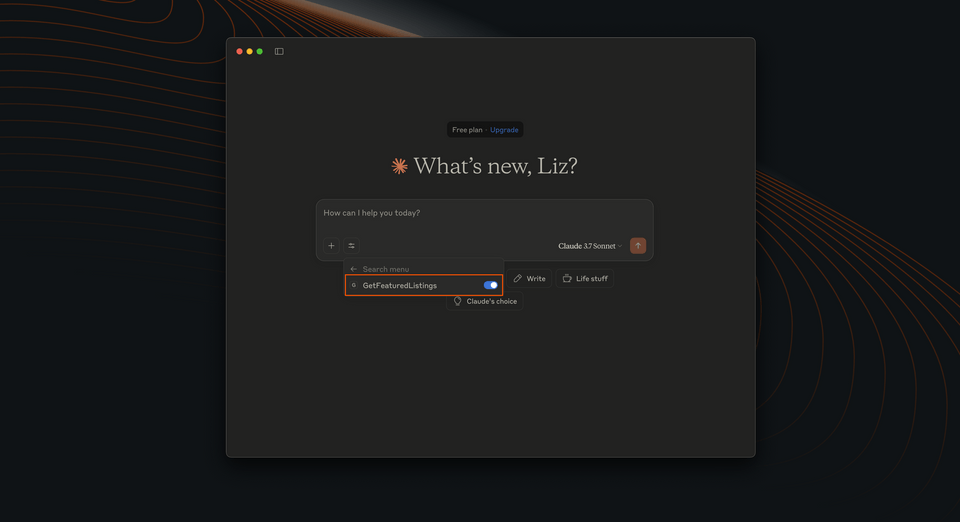
Now let's chat with Claude and see if we can get it to invoke the tool. Here's the message we're using:
What are the featured listings today?
After just a moment of chat processing time, we should see our conversation interrupted by a new modal appearing.
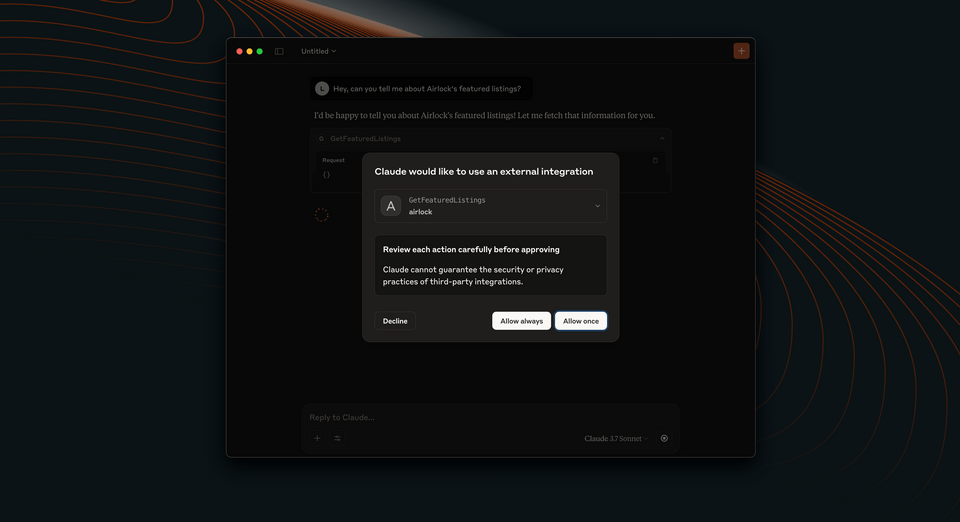
This shows us exactly what tool Claude wants to invoke. Since this involves a 3rd party connection to our MCP server, we need to approve it before the assistant will proceed. Let's click Allow once so we can continue seeing this modal whenever Claude tries out this tool.
We'll see a breakdown of what that request looks like: Claude invokes the tool, but we can see from the Request body that it's not actually executing the GraphQL operation or sending parameters. All it has done is tell the MCP server that the GetFeaturedListings tool should be executed. In response, we see all the data return—and very quickly, Claude turns it into something a bit more conversation, with better styling too!
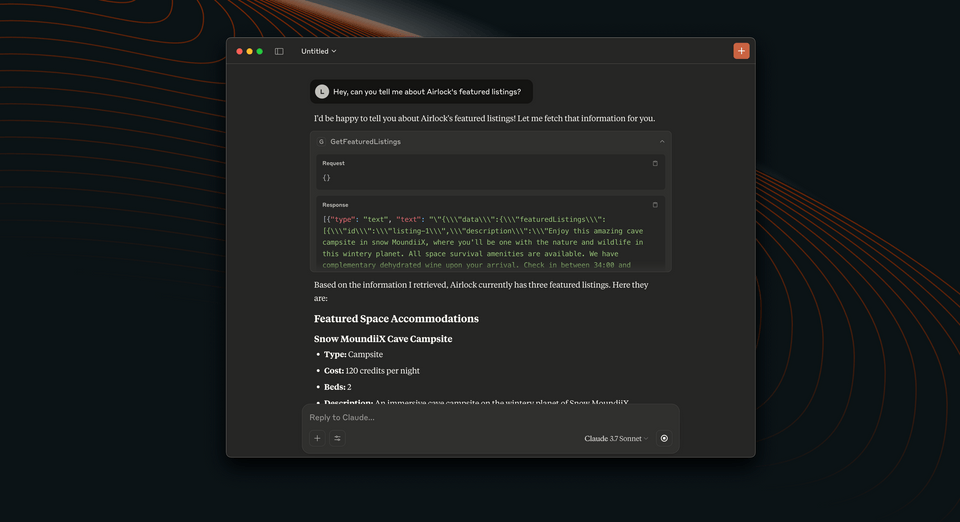
Practice
Key takeaways
- To enable an MCP server connection in Claude, we can edit the
claude_desktop_config.jsonfile. - In this file, we provide the name of the MCP server, along with the
commandto start it and anyargsthat should be included. - Before using external integrations (like connections to an MCP server), Claude asks for permission.
Up next
We've equipped our assistant with a handy "featured listings" tool it can invoke to help answer user's questions. What other kinds of functionality can we wrap up behind assistant-facing tools? Let's give Claude a way to be more specific about each listing in the next lesson.
Share your questions and comments about this lesson
This course is currently in
You'll need a GitHub account to post below. Don't have one? Post in our Odyssey forum instead.
